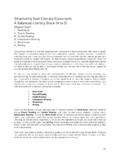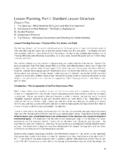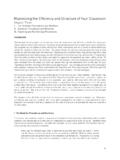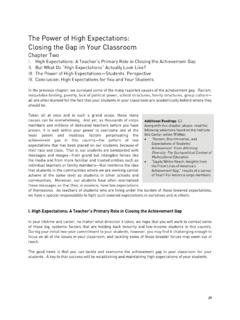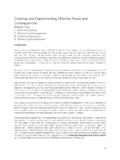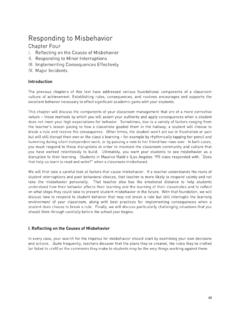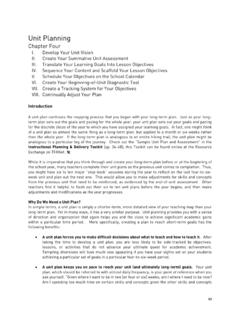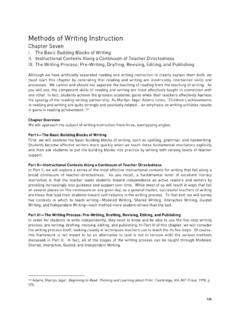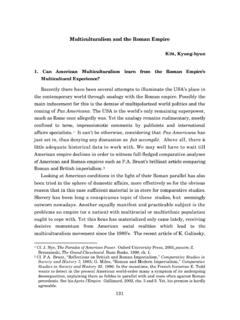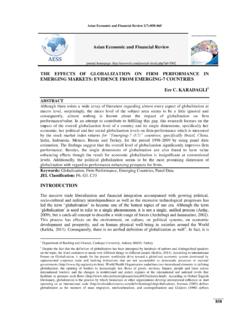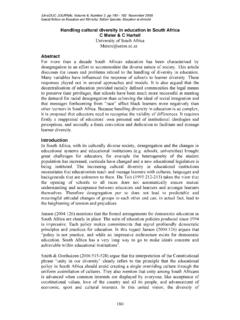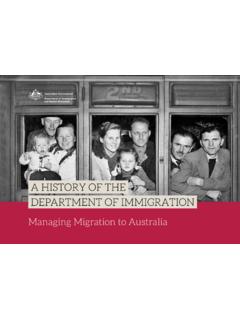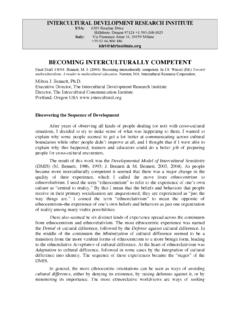Transcription of 1 DCA InsideCover 2011 FINAL - Teaching As …
1 93 Multicultural Education Chapter Eight I. What Is Multicultural Education ? II. But Can They Do Math? Multicultural and Equitable Education III. So What Does Multicultural Education Mean in My Classroom IV. Conclusion Thus far, we have discussed several of the important knowledge bases that teachers must develop in order to harness the potential of diversity as a path to student achievement. After the introduction to dynamics of difference and sameness in Chapter Four, we explored in Chapter Five the importance of learning about one s self one s own biases and privileges as a means of maintaining high expectations for our students. In Chapter Six, we considered students and teachers racial identity development, and in the last chapter we considered the lessons suggested by, and debate surrounding, the idea that students cultures should influence a teacher s instructional methods.
2 In this chapter, we step back to approach the practice of multicultural education more broadly. Over the past several decades, a body of knowledge and Teaching methods that falls under that heading has developed a body of knowledge that is meant to improve teachers abilities to lead their students to academic success and personal growth. Next, we will consider what is meant by multicultural education and explore some of the specific ways that teachers can implement its principles in the classroom. I. What Is Multicultural Education ? In the most general sense, multicultural education is an approach to Teaching that values diversity in the classroom diversity in content, methods, perspectives, educators, students, and cultures. Being a multicultural educator means embracing your students and others cultural diversity as a means of nurturing your students academic and personal growth.
3 Of course, within this broad framework, [m]ulticultural education means different things to different people 112 (and it is worth noting that we will be able to explore only a small slice of that complex network of meanings here). Given its broad definitions, teachers implement multicultural education in a variety of ways: Some definitions rely on the cultural characteristics of diverse groups, while others emphasize social problems (particularly those associated with oppression), political power, and the reallocation of economic resources. Some restrict their focus to people of color, while others include all major groups that are different in any way from mainstream Americans. Other definitions limit multicultural education to characteristics 112 Gay, Geneva.
4 A Synthesis of Scholarship in Multicultural Education. North Central Regional Educational Laboratory. Urban Educatino Program, 1994. , accessed 7/10/2010. Additional Readings Along with this chapter, please take a few minutes to read the following selection found on the Institute Info Center within TFANet: Profoundly Multicultural Questions by Sonia Nieto, from Educational Leadership, Vol. 60 No. 4, December 2002/ January 2003, pp 6-10 Multicultural Education 94 of local schools, and still others provide directions for school reform in all settings regardless of their Some of the Defining Motivations of Multicultural Education. Perhaps the most meaningful way to come to grips with the rather expansive scope of approaches and practices that make up the notion of multicultural education is to consider some of the various reasons that educators incorporate those approaches into their classrooms.
5 While we will save the most important motivation increasing instructional effectiveness for last, here we will briefly review some of other the reasons that teachers incorporate multicultural education into their classroom. Education expert Geneva Gay, in her survey of research on and the parameters of multicultural education called A Synthesis of Scholarship in Multicultural Education, helpfully delineates various purposes of multicultural education as follows: Developing Ethnic and Cultural Literacy. In some cases, exploring and engaging diverse cultures is valued for the content of that knowledge. As Gay explains, in this way, students learn about the historical backgrounds, languages, cultural characteristics, contributions, critical events, significant individuals, and social, political, and economic conditions of various majority and minority ethnic groups, including those that may have traditionally been excluded from texts and lessons.
6 Personal Development. Another value of multicultural education is that especially when those otherwise-underrepresented groups are brought into texts and lessons students are offered more opportunity to see positive representations of aspects of themselves, leading students to greater self-understanding, positive self-concepts, and pride in one s ethnic identity. Educators stress that these personal development benefits directly translate to academic achievement benefits as students are more inclined to be motivated to work hard and succeed. Attitudes and Value Clarification. Another intention of multicultural education is to better prepare students for living in a diverse community. For this purpose, the intent is to teach youths to respect and embrace ethnic pluralism, to realize that cultural differences are not synonymous with deficiencies or inferiorities, and to recognize that diversity is an integral part of the human condition and life.
7 Multicultural Social Competence. Closely related to the previous purpose, another sub-intention of multicultural education is to teach students concrete techniques for interacting with people who are different from themselves. This idea extrapolates to a whole range of important academic and analytical skills and is achieved by Teaching skills in cross cultural communication, interpersonal relations, perspective taking, contextual analysis, understanding alternative points of view and frames of reference, and analyzing how cultural conditions affect values, attitudes, beliefs, preferences, expectations, and behaviors. In addition to these classroom motivations for multicultural education, many educators and scholars point to extra-classroom purposes, including the broader quest for educational equity and excellence and personal empowerment for social reform.
8 These social change motivations focus on the long-term impact of developing students who will, through their lives, help to improve society by eradicating such social ills as racism, sexism and classism. Such teachers see themselves as those engaged in the ongoing struggle to advance social justice for the various groups who fail to get their adequate share of resources and decision-making power in the larger society. 114 113 Ibid. 114 Montecions, Carmen and Francisco A. Rios. Assessing Preservice Teachers Zones of Concern and Comfort in Multicultural Education. Teacher Education Quarterly, Summer 1999, Vol. 26, No. 3. 95As mentioned previously, while all of these various motivations for multicultural education are important to understanding what it is and why it is important, the ultimate purpose of multicultural education explains why we stress its methods to new corps members multicultural education can be a means of increasing your effectiveness as an instructional leader in your classroom.
9 The Bottom Line Multicultural Education Drives Student Growth and Achievement. By engaging and appreciating diverse cultures and perspectives in the classroom, teachers broaden the menu of possible connections to students that can be leveraged into greater, more efficient Teaching and learning. For example, cultural learning styles (as discussed in Chapter Seven) may be considered a component of multicultural education, and its proponents claim that teachers are more effective when they align their methods with the learning propensities of his or her students cultures. Moreover, by creating an atmosphere of achievement that is inclusive of all cultures and perspectives, a teacher helps students overcome some of the challenges to hard work and learning (lack of motivation, low expectations, low self-esteem) that may hold them back.
10 As Gay explains, Multicultural education can improve mastery of reading, writing, and mathematical skills; subject matter content; and intellectual process skills such as problem solving, critical thinking, and conflict resolution by providing content and techniques that are more meaningful to the lives and frames of reference of ethnically different students. Using ethnic materials, experiences, and examples as the contexts for Teaching , practicing, and demonstrating mastery of academic and subject matter skills increases the appeal of the tools of instruction, heightens the practical relevance of the skills to be learned, and improves students' time on task. This combination of conditions leads to greater focused efforts, task persistence, skill mastery, and academic achievement (Cazden, John, & Hymes, 1985; Garcia, 1982; Boggs, WatsonGregeo, & McMillen, 1985).
